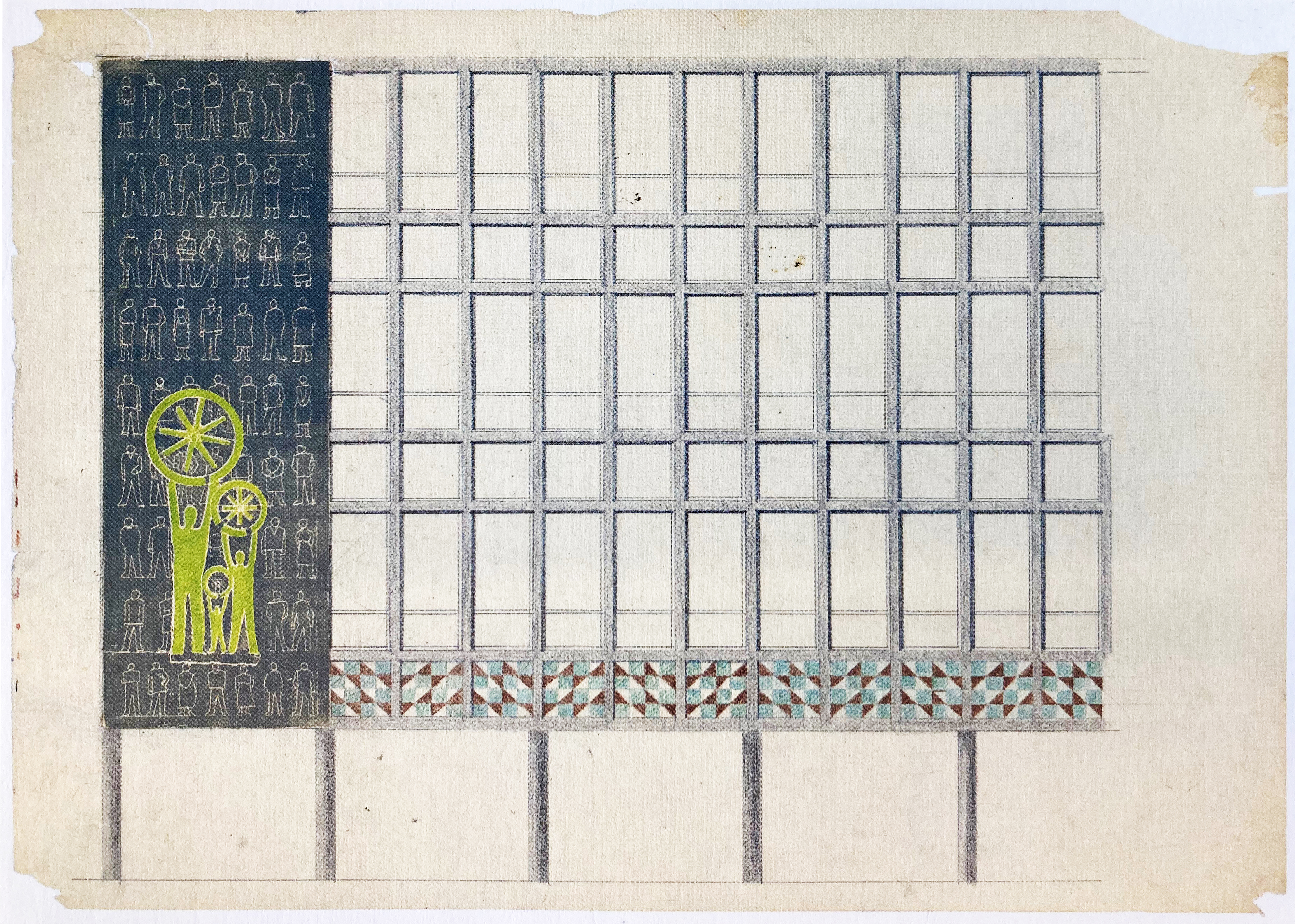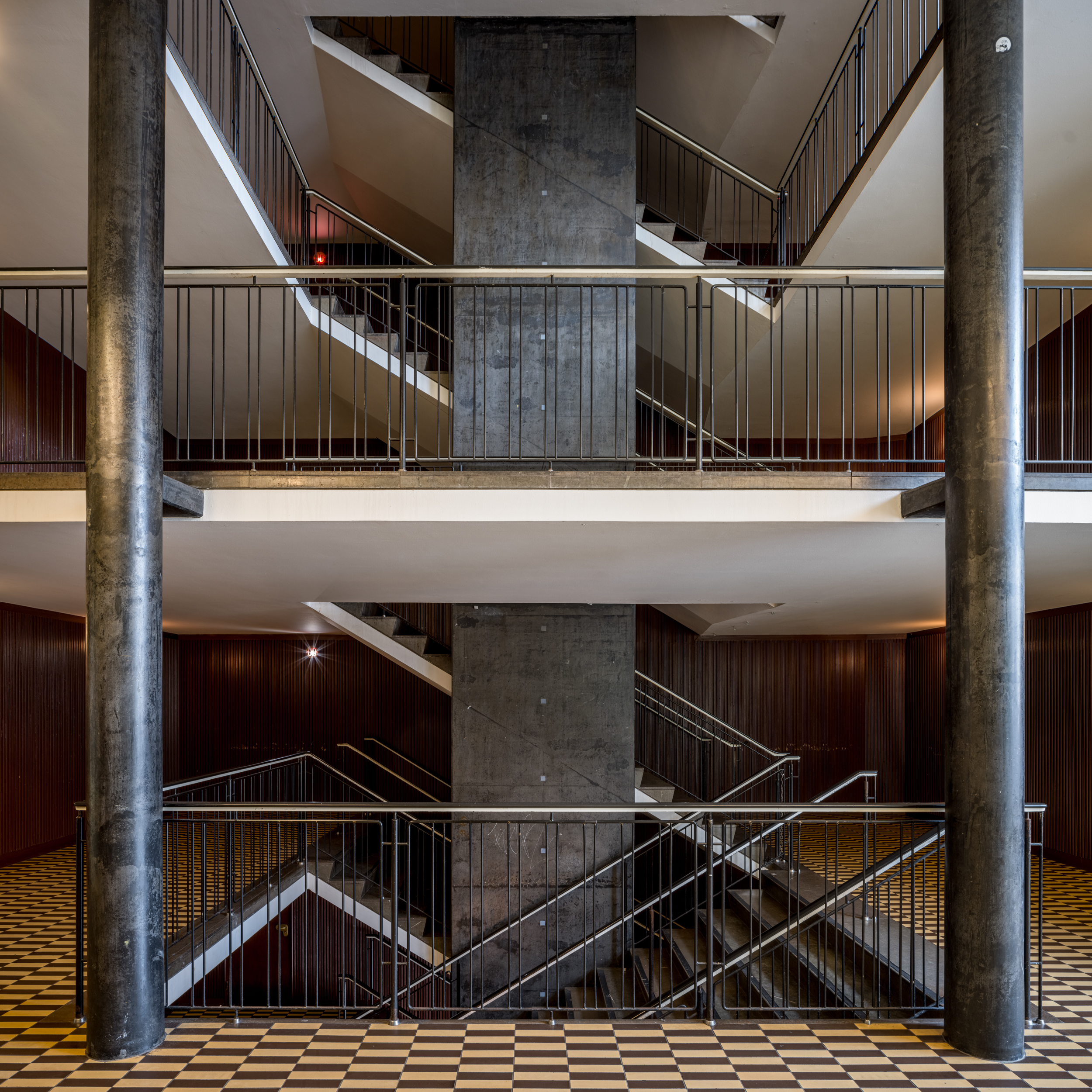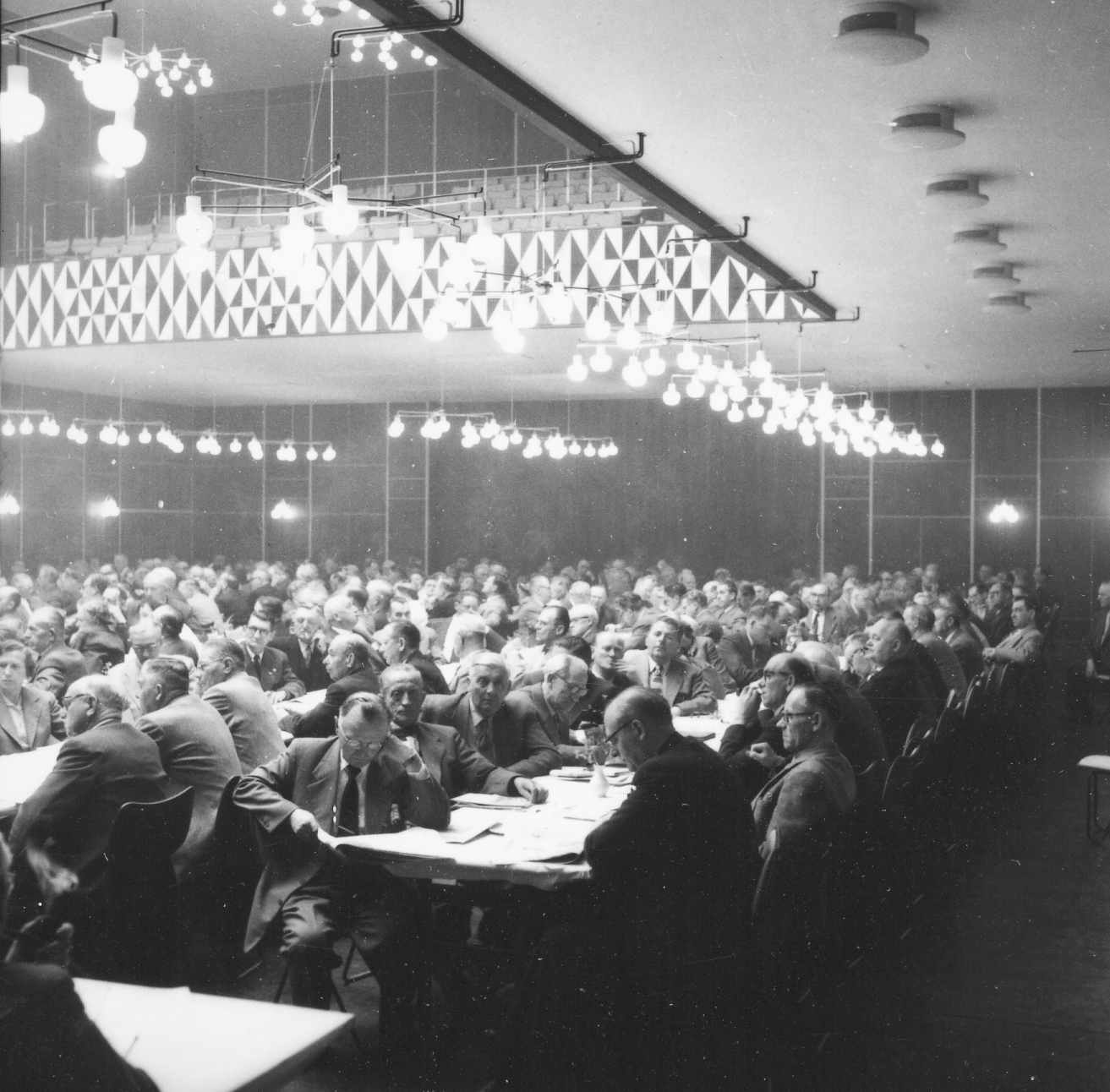VEGA’s concert halls – Store VEGA, Lille VEGA and Ideal Bar – invite people to visit and explore the building’s quirky features that showcase the Functionalism style of the 1950s. The building was designed by Vilhelm Lauritzen and opened its doors in 1956. A design that displayed without pretense its structure of reinforced concrete and glass. The building served as a meeting place for the Danish labor movement until it was forced to close in the early 1990s.
Resurrection
The abandoned building had fallen into disrepair when Danish artist Bjørn Nørgaard visited it in the following years. Then, together with the politician Svend Auken, he led a successful campaign that eventually resulted in the building being listed as a historical monument in 1994. Vega was completely restored and opened its doors to the public again in connection with the celebration of Copenhagen as the European Capital of Culture in 1996.
Design from top to bottom by Vilhelm Lauritzen
Today, VEGA is still considered an extraordinary masterpiece. The dark wooden panels, mahogany flooring, ornamental friezes, and beautifully designed original details, like banisters and lamps, makes the building an architectural gem of classic Scandinavian style. Vilhelm Lauritzen designed all the decor himself, integrating the doorknobs, chandeliers, electrical sockets, furnishings, the detailed wooden panels, and labyrinthine staircases into the building’s design.
A Copenhagen Landmark
This classic example of Functionalism is located in the lively Vesterbro district of Copenhagen with Enghave Plads square and the metro just outside its doors. The building’s exterior facade features a three-story-high ceramic bas-relief created by Danish artist Dan Sterup-Hansen. Vilhelm Lauritzen’s Nordic architecture – together with the giant artwork on the facade – make the building a landmark for the neighborhood around Enghavevej in Copenhagen.





